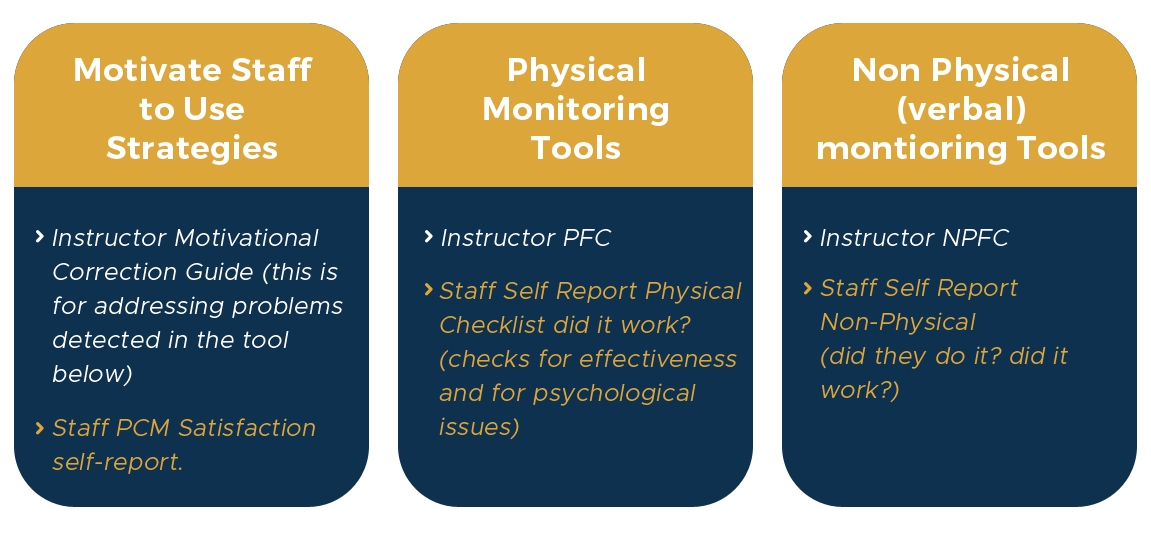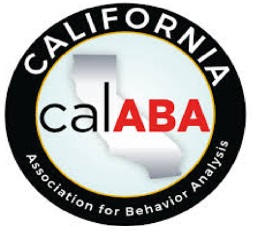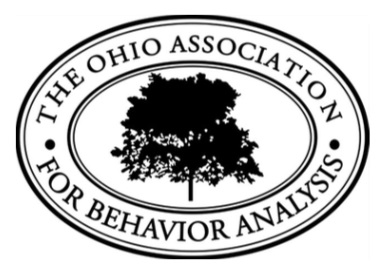Step 6: Apply and Optimize
Your Staff will use the PCM system in practice, and do it well.
Sometimes staff come back from trainings with new information, but in practice their behavior really isn’t any different. Staff sometimes don’t apply what trainings offer because they either 1: didn’t actually master the skill or 2: They didn’t believe the content was appropriate for them. Our system addresses these critical issues.
In our experience, those organizations that do not follow these steps after the initial training have subpar results. Organizations that are fully aligned with Professional Crisis Management have the best results and instances of litigation and injury to staff and students will dramatically decrease.
Typical 'after training' Problems
Goals and desires after the training
Even though staff may say they loved the training, they are not implementing any of the procedures or strategies, they seem to falling back on old habits, which is why we sent them in the first place.
Using restraints when only absolutely necessary should be a goal of any organization but ensuring this outcome can be difficult. The problem with the overuse of restraints is obvious, but sometimes the underuse of restraints can lead to serious safety issues for both clients and staff
When a crisis situation arises, staff must not only be able to quickly use the crisis management skill they have learned, but it is critical that they do the physical procedures correctly every time. Procedural drift (doing the physical procedure even slightly differently) could lead to a safety concern. Procedural drift may be especially prevalent in those staff who do not have to use physical procedures often.
I want to see my staff actually using new procedures and techniques that they brought back from the training. These new procedures and techniques should produce results that the staff get excited about!
PCM offers a Post-Incident checklist that administrators and supervisors may use to identify if the crisis situation met the PCM criteria for using physical procedures. Continuous review and use of this checklist can ensure that your organization is using physical procedures only when absolutely necessary
I want to be certain that even 6 months later my staff are still using the procedures and techniques correctly and appropriately. However, I don’t want to wait 6 months to find out about their skills, I need to know if their skills are drifting as soon as possible.
Apply and Optimize your practices after the practitioner training
Yes, there is a sytem for that

The PCM "Apply and Optimize after Training" system
The PCM 'Apply and Optimize after Training' system leans heavily on the PFC tool, which stands for the 'Physical Fidelity Checklist' .
“The feedback gained by using the PFC tool is like stepping on the scale every so often to make sure you’re not cheating too much on your diet.”

“Apply and Optimize” , the sixth step in the PCM system, is the third step in the Roll Out Stage of the PCM. It is designed to make the trainings ‘stick’ and will lead to Safety, Dignity and Effectiveness for students and staff as interruptions by crises will have been minimized
The components of the PCMA 'Apply and Optimize after Training' system explained
The PCM-system administers the staff satisfaction self-report, and based on the results of this tool the Instructor can both detect staff motivation problems and how their confidence may affect their willingness to use the procedures. The instructor then uses the information collected from the self-report tool and refers to the Motivational Correction Guide to address the problem.
The best practice to maintain fidelity, even 6 months after training, is that the instructor administers the PFC tool, which stands for Physical-Fidelity Checklist. The instructor will ask the practitioner to demonstrate the same procedures that they had to demonstrate competently during their initial training. If the checklist reveals any deficiencies in performance, then the instructor simply follows the protocol to quickly and easily remediate the skill.
Another tool used in this 'Apply and Optimize' method is the 'Physical intervention Self-report checklist'.
After staff have gained a little experience intervening in a crisis, it is usually a good idea to gauge the feelings of the staff. This would include their feelings about the effectiveness of the interventions, how safe they felt, how confident, and their feelings about the safety client/student was both physically and psychologically. The instructor in turn, can then use these results as well using the Motivational Correction Guide.
Testimonial or a case study / story
A well executed roll out of a PCM system makes sure that the training 'sticks'.




A sample of the Applied Behavior Analysis Associations we participate with

